Checked by: Jukova T. Done by: Aitmyrza A.

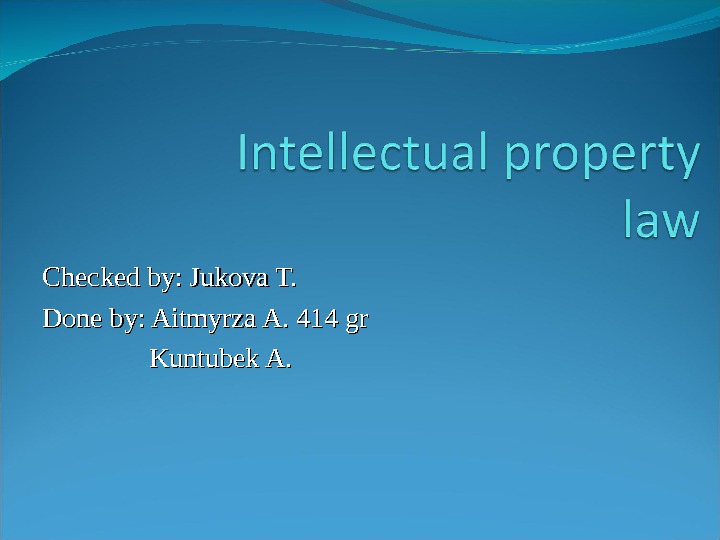
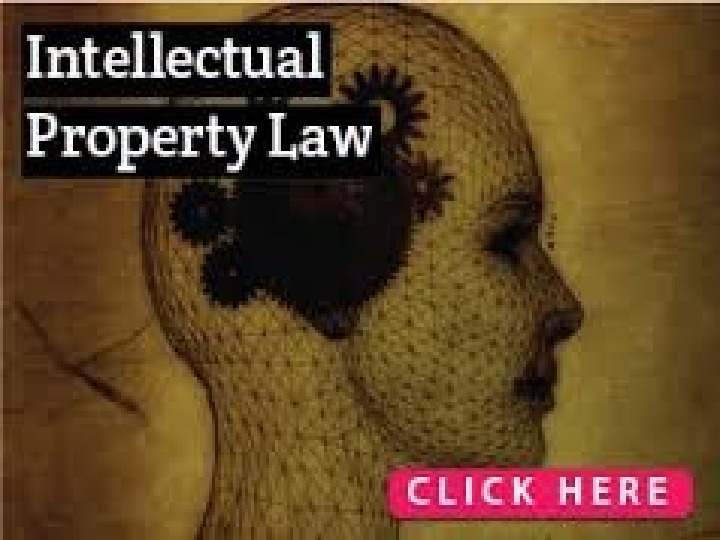
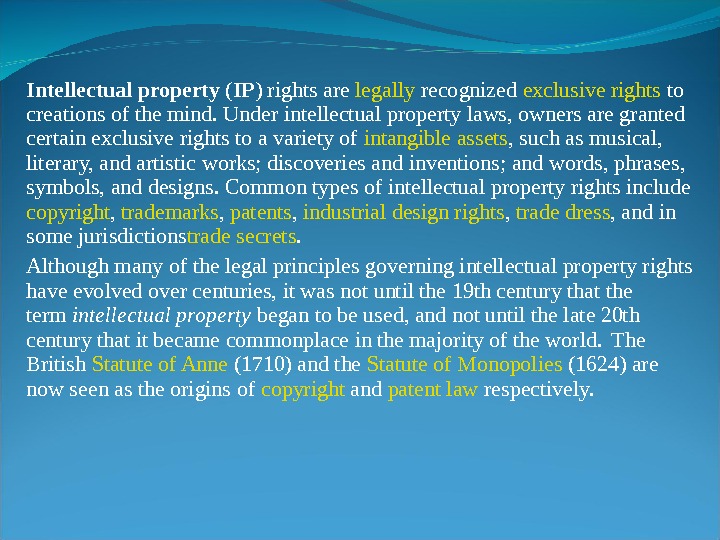

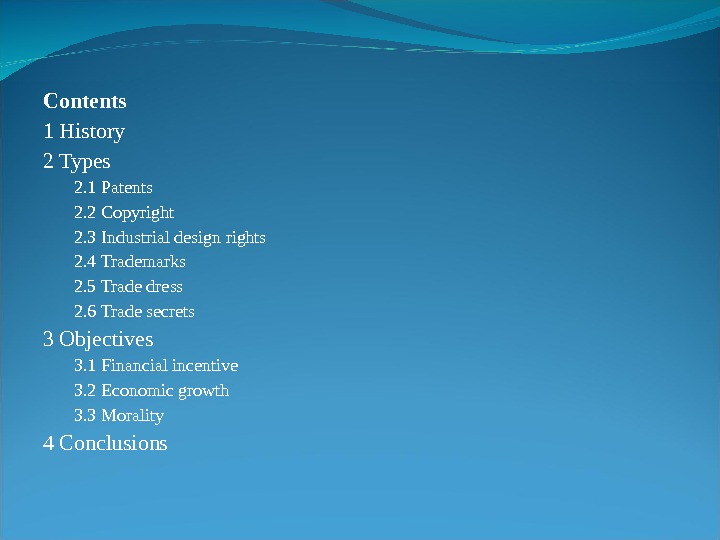

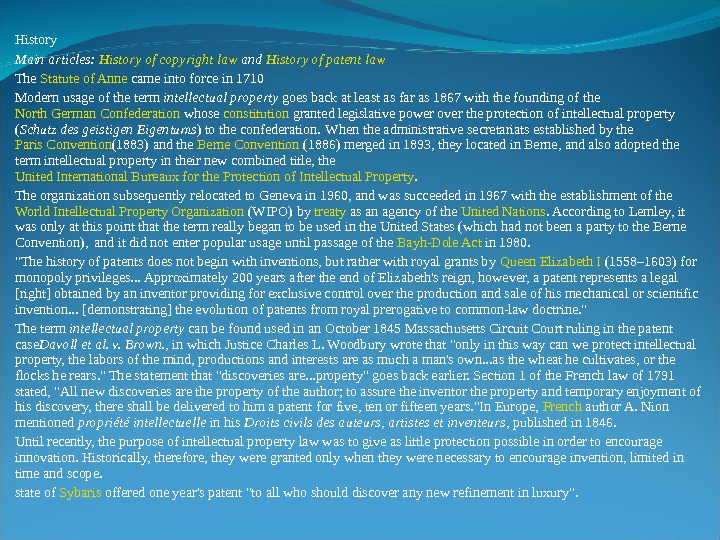

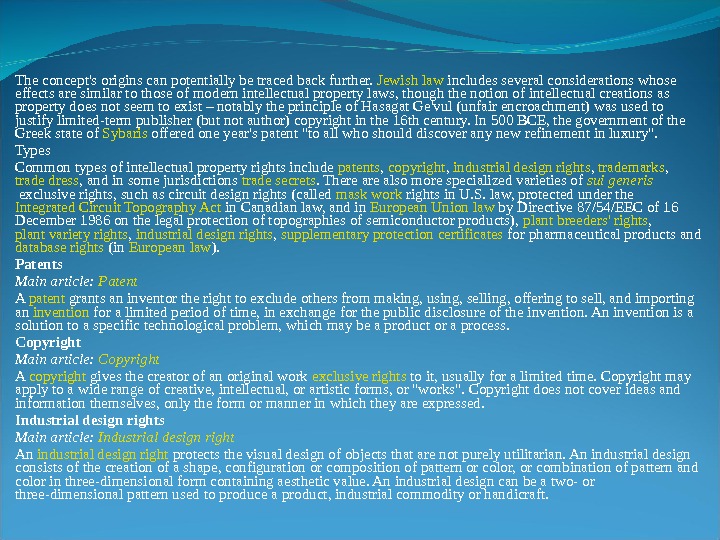
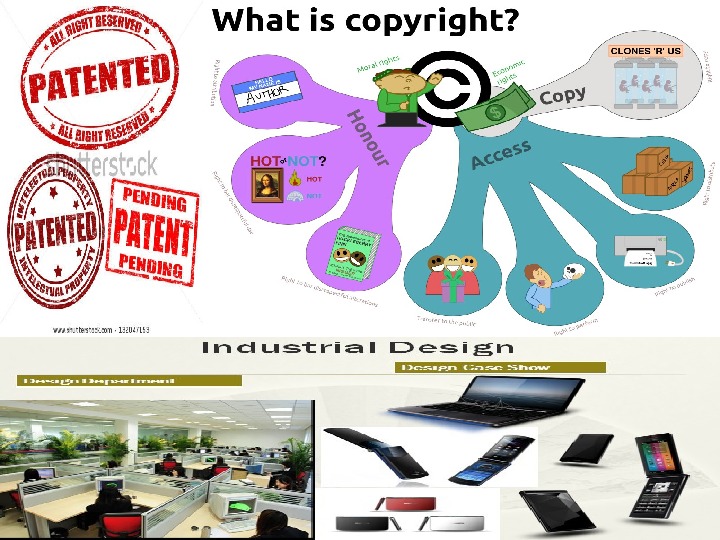
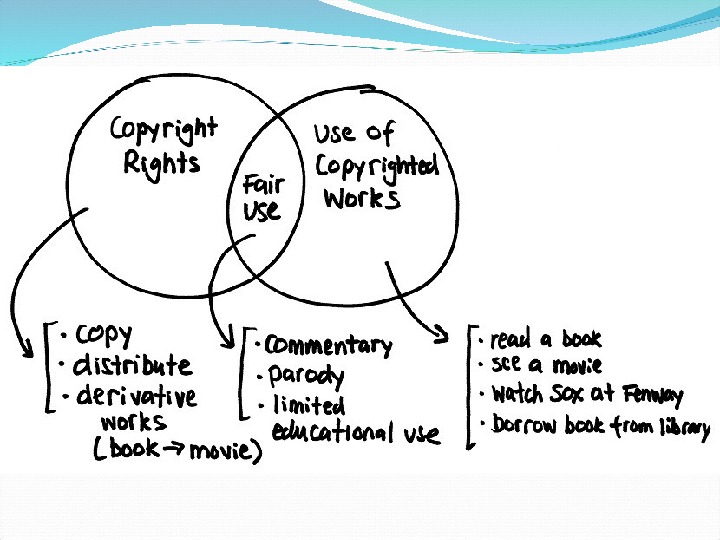
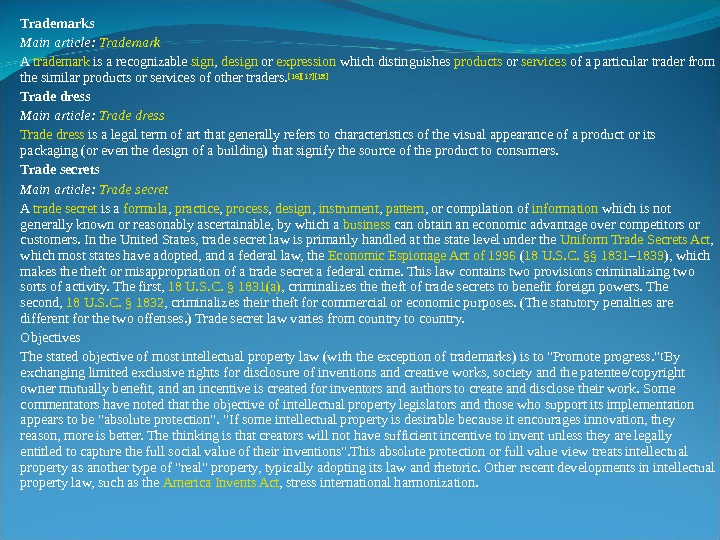
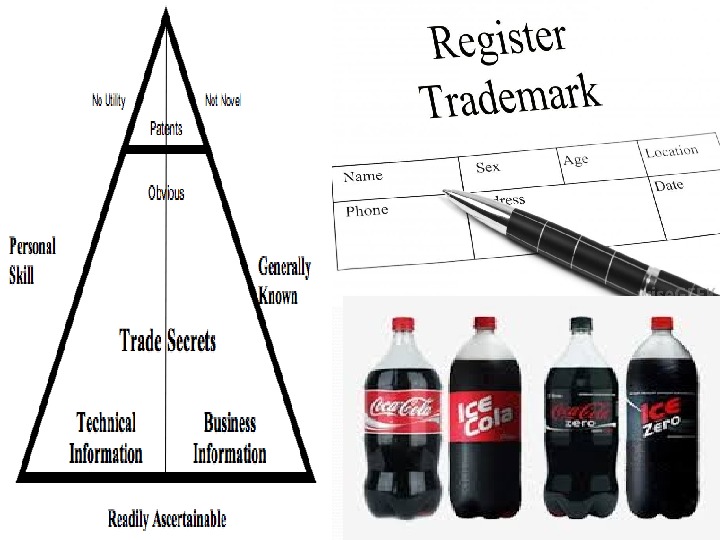
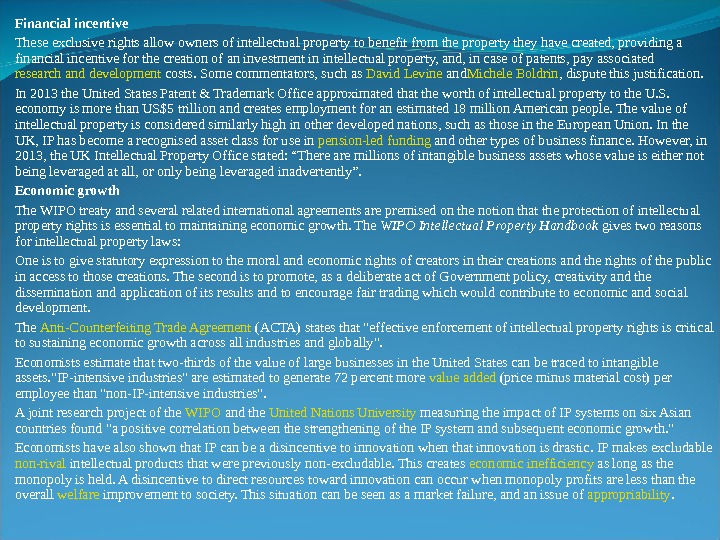
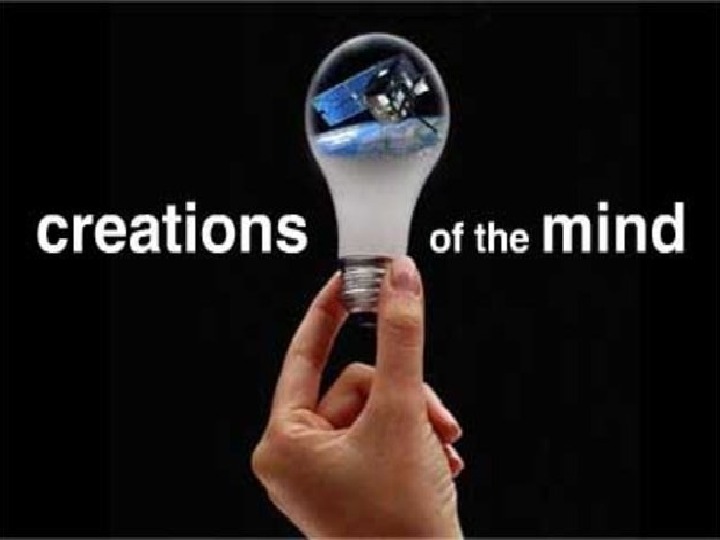
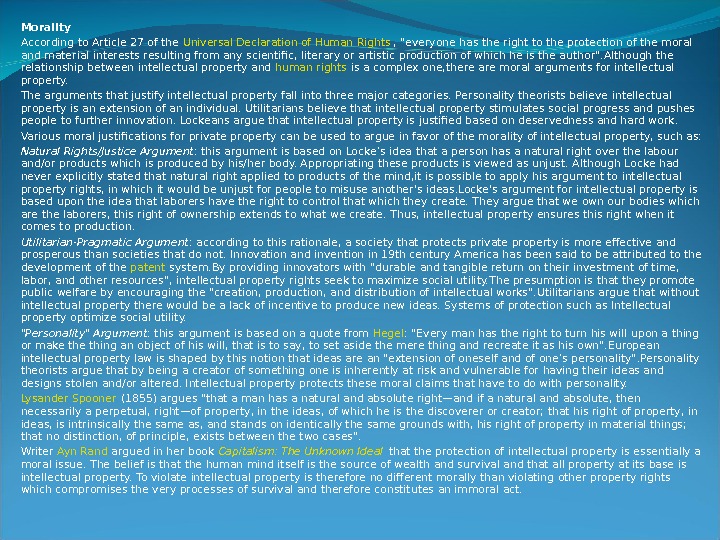

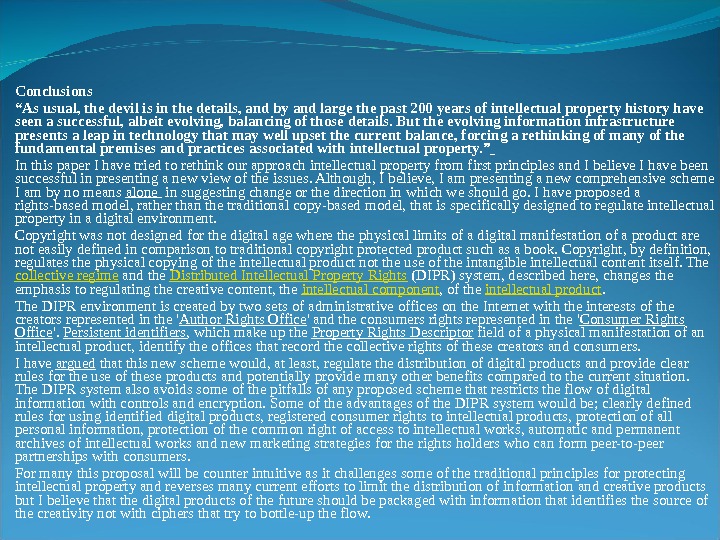
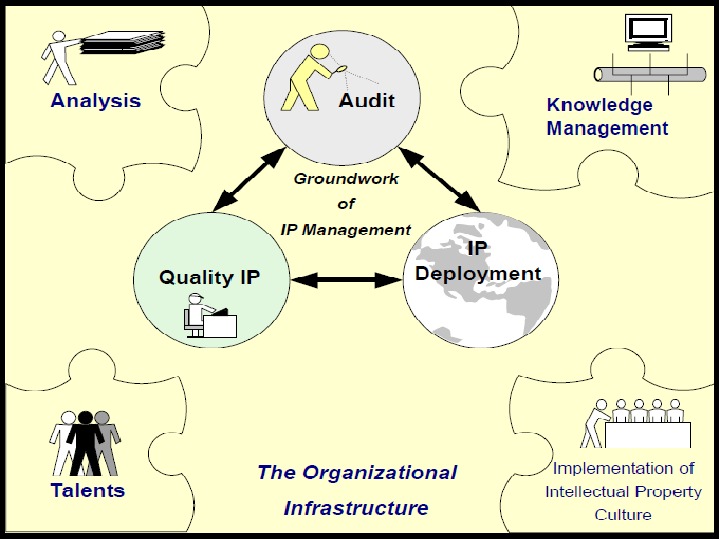
- Размер: 1.5 Mегабайта
- Количество слайдов: 19
Описание презентации Checked by: Jukova T. Done by: Aitmyrza A. по слайдам
 Checked by: Jukova T. Done by: Aitmyrza A. 414 gr Kuntubek A.
Checked by: Jukova T. Done by: Aitmyrza A. 414 gr Kuntubek A.

 Intellectual property ( IP ) rights are legally recognized exclusive rights to creations of the mind. Under intellectual property laws, owners are granted certain exclusive rights to a variety of intangible assets , such as musical, literary, and artistic works; discoveries and inventions; and words, phrases, symbols, and designs. Common types of intellectual property rights include copyright , trademarks , patents , industrial design rights , trade dress , and in some jurisdictions trade secrets. Although many of the legal principles governing intellectual property rights have evolved over centuries, it was not until the 19 th century that the term intellectual property began to be used, and not until the late 20 th century that it became commonplace in the majority of the world. The British Statute of Anne (1710) and the Statute of Monopolies (1624) are now seen as the origins of copyright and patent law respectively.
Intellectual property ( IP ) rights are legally recognized exclusive rights to creations of the mind. Under intellectual property laws, owners are granted certain exclusive rights to a variety of intangible assets , such as musical, literary, and artistic works; discoveries and inventions; and words, phrases, symbols, and designs. Common types of intellectual property rights include copyright , trademarks , patents , industrial design rights , trade dress , and in some jurisdictions trade secrets. Although many of the legal principles governing intellectual property rights have evolved over centuries, it was not until the 19 th century that the term intellectual property began to be used, and not until the late 20 th century that it became commonplace in the majority of the world. The British Statute of Anne (1710) and the Statute of Monopolies (1624) are now seen as the origins of copyright and patent law respectively.

 Contents 1 History 2 Types 2. 1 Patents 2. 2 Copyright 2. 3 Industrial design rights 2. 4 Trademarks 2. 5 Trade dress 2. 6 Trade secrets 3 Objectives 3. 1 Financial incentive 3. 2 Economic growth 3. 3 Morality 4 Conclusions
Contents 1 History 2 Types 2. 1 Patents 2. 2 Copyright 2. 3 Industrial design rights 2. 4 Trademarks 2. 5 Trade dress 2. 6 Trade secrets 3 Objectives 3. 1 Financial incentive 3. 2 Economic growth 3. 3 Morality 4 Conclusions

 History Main articles: History of copyright law and History of patent law The Statute of Anne came into force in 1710 Modern usage of the term intellectual property goes back at least as far as 1867 with the founding of the North German Confederation whose constitution granted legislative power over the protection of intellectual property ( Schutz des geistigen Eigentums ) to the confederation. When the administrative secretariats established by the Paris Convention (1883) and the Berne Convention (1886) merged in 1893, they located in Berne, and also adopted the term intellectual property in their new combined title, the United International Bureaux for the Protection of Intellectual Property. The organization subsequently relocated to Geneva in 1960, and was succeeded in 1967 with the establishment of the World Intellectual Property Organization (WIPO) by treaty as an agency of the United Nations. According to Lemley, it was only at this point that the term really began to be used in the United States (which had not been a party to the Berne Convention), and it did not enter popular usage until passage of the Bayh-Dole Act in 1980. «The history of patents does not begin with inventions, but rather with royal grants by Queen Elizabeth I (1558– 1603) for monopoly privileges. . . Approximately 200 years after the end of Elizabeth’s reign, however, a patent represents a legal [right] obtained by an inventor providing for exclusive control over the production and sale of his mechanical or scientific invention. . . [demonstrating] the evolution of patents from royal prerogative to common-law doctrine. » The term intellectual property can be found used in an October 1845 Massachusetts Circuit Court ruling in the patent case Davoll et al. v. Brown. , in which Justice Charles L. Woodbury wrote that «only in this way can we protect intellectual property, the labors of the mind, productions and interests are as much a man’s own. . . as the wheat he cultivates, or the flocks he rears. » The statement that «discoveries are. . . property» goes back earlier. Section 1 of the French law of 1791 stated, «All new discoveries are the property of the author; to assure the inventor the property and temporary enjoyment of his discovery, there shall be delivered to him a patent for five, ten or fifteen years. «In Europe, French author A. Nion mentioned propriété intellectuelle in his Droits civils des auteurs, artistes et inventeurs , published in 1846. Until recently, the purpose of intellectual property law was to give as little protection possible in order to encourage innovation. Historically, therefore, they were granted only when they were necessary to encourage invention, limited in time and scope. state of Sybaris offered one year’s patent «to all who should discover any new refinement in luxury».
History Main articles: History of copyright law and History of patent law The Statute of Anne came into force in 1710 Modern usage of the term intellectual property goes back at least as far as 1867 with the founding of the North German Confederation whose constitution granted legislative power over the protection of intellectual property ( Schutz des geistigen Eigentums ) to the confederation. When the administrative secretariats established by the Paris Convention (1883) and the Berne Convention (1886) merged in 1893, they located in Berne, and also adopted the term intellectual property in their new combined title, the United International Bureaux for the Protection of Intellectual Property. The organization subsequently relocated to Geneva in 1960, and was succeeded in 1967 with the establishment of the World Intellectual Property Organization (WIPO) by treaty as an agency of the United Nations. According to Lemley, it was only at this point that the term really began to be used in the United States (which had not been a party to the Berne Convention), and it did not enter popular usage until passage of the Bayh-Dole Act in 1980. «The history of patents does not begin with inventions, but rather with royal grants by Queen Elizabeth I (1558– 1603) for monopoly privileges. . . Approximately 200 years after the end of Elizabeth’s reign, however, a patent represents a legal [right] obtained by an inventor providing for exclusive control over the production and sale of his mechanical or scientific invention. . . [demonstrating] the evolution of patents from royal prerogative to common-law doctrine. » The term intellectual property can be found used in an October 1845 Massachusetts Circuit Court ruling in the patent case Davoll et al. v. Brown. , in which Justice Charles L. Woodbury wrote that «only in this way can we protect intellectual property, the labors of the mind, productions and interests are as much a man’s own. . . as the wheat he cultivates, or the flocks he rears. » The statement that «discoveries are. . . property» goes back earlier. Section 1 of the French law of 1791 stated, «All new discoveries are the property of the author; to assure the inventor the property and temporary enjoyment of his discovery, there shall be delivered to him a patent for five, ten or fifteen years. «In Europe, French author A. Nion mentioned propriété intellectuelle in his Droits civils des auteurs, artistes et inventeurs , published in 1846. Until recently, the purpose of intellectual property law was to give as little protection possible in order to encourage innovation. Historically, therefore, they were granted only when they were necessary to encourage invention, limited in time and scope. state of Sybaris offered one year’s patent «to all who should discover any new refinement in luxury».

 The concept’s origins can potentially be traced back further. Jewish law includes several considerations whose effects are similar to those of modern intellectual property laws, though the notion of intellectual creations as property does not seem to exist – notably the principle of Hasagat Ge’vul (unfair encroachment) was used to justify limited-term publisher (but not author) copyright in the 16 th century. In 500 BCE, the government of the Greek state of Sybaris offered one year’s patent «to all who should discover any new refinement in luxury». Types Common types of intellectual property rights include patents , copyright , industrial design rights , trademarks , trade dress , and in some jurisdictions trade secrets. There also more specialized varieties of sui generis exclusive rights, such as circuit design rights (called mask work rights in U. S. law, protected under the Integrated Circuit Topography Act in Canadian law, and in European Union law by Directive 87/54/EEC of 16 December 1986 on the legal protection of topographies of semiconductor products), plant breeders’ rights , plant variety rights , industrial design rights , supplementary protection certificates for pharmaceutical products and database rights (in European law ). Patents Main article: Patent A patent grants an inventor the right to exclude others from making, using, selling, offering to sell, and importing an invention for a limited period of time, in exchange for the public disclosure of the invention. An invention is a solution to a specific technological problem, which may be a product or a process. Copyright Main article: Copyright A copyright gives the creator of an original work exclusive rights to it, usually for a limited time. Copyright may apply to a wide range of creative, intellectual, or artistic forms, or «works». Copyright does not cover ideas and information themselves, only the form or manner in which they are expressed. Industrial design rights Main article: Industrial design right An industrial design right protects the visual design of objects that are not purely utilitarian. An industrial design consists of the creation of a shape, configuration or composition of pattern or color, or combination of pattern and color in three-dimensional form containing aesthetic value. An industrial design can be a two- or three-dimensional pattern used to produce a product, industrial commodity or handicraft.
The concept’s origins can potentially be traced back further. Jewish law includes several considerations whose effects are similar to those of modern intellectual property laws, though the notion of intellectual creations as property does not seem to exist – notably the principle of Hasagat Ge’vul (unfair encroachment) was used to justify limited-term publisher (but not author) copyright in the 16 th century. In 500 BCE, the government of the Greek state of Sybaris offered one year’s patent «to all who should discover any new refinement in luxury». Types Common types of intellectual property rights include patents , copyright , industrial design rights , trademarks , trade dress , and in some jurisdictions trade secrets. There also more specialized varieties of sui generis exclusive rights, such as circuit design rights (called mask work rights in U. S. law, protected under the Integrated Circuit Topography Act in Canadian law, and in European Union law by Directive 87/54/EEC of 16 December 1986 on the legal protection of topographies of semiconductor products), plant breeders’ rights , plant variety rights , industrial design rights , supplementary protection certificates for pharmaceutical products and database rights (in European law ). Patents Main article: Patent A patent grants an inventor the right to exclude others from making, using, selling, offering to sell, and importing an invention for a limited period of time, in exchange for the public disclosure of the invention. An invention is a solution to a specific technological problem, which may be a product or a process. Copyright Main article: Copyright A copyright gives the creator of an original work exclusive rights to it, usually for a limited time. Copyright may apply to a wide range of creative, intellectual, or artistic forms, or «works». Copyright does not cover ideas and information themselves, only the form or manner in which they are expressed. Industrial design rights Main article: Industrial design right An industrial design right protects the visual design of objects that are not purely utilitarian. An industrial design consists of the creation of a shape, configuration or composition of pattern or color, or combination of pattern and color in three-dimensional form containing aesthetic value. An industrial design can be a two- or three-dimensional pattern used to produce a product, industrial commodity or handicraft.


 Trademarks Main article: Trademark A trademark is a recognizable sign , design or expression which distinguishes products or services of a particular trader from the similar products or services of other traders. [16] [17] [18] Trade dress Main article: Trade dress is a legal term of art that generally refers to characteristics of the visual appearance of a product or its packaging (or even the design of a building) that signify the source of the product to consumers. Trade secrets Main article: Trade secret A trade secret is a formula , practice , process , design , instrument , pattern , or compilation of information which is not generally known or reasonably ascertainable, by which a business can obtain an economic advantage over competitors or customers. In the United States, trade secret law is primarily handled at the state level under the Uniform Trade Secrets Act , which most states have adopted, and a federal law, the Economic Espionage Act of 1996 ( 18 U. S. C. §§ 1831 – 1839 ), which makes theft or misappropriation of a trade secret a federal crime. This law contains two provisions criminalizing two sorts of activity. The first, 18 U. S. C. § 1831(a) , criminalizes theft of trade secrets to benefit foreign powers. The second, 18 U. S. C. § 1832 , criminalizes their theft for commercial or economic purposes. (The statutory penalties are different for the two offenses. ) Trade secret law varies from country to country. Objectives The stated objective of most intellectual property law (with the exception of trademarks) is to «Promote progress. » [ By exchanging limited exclusive rights for disclosure of inventions and creative works, society and the patentee/copyright owner mutually benefit, and an incentive is created for inventors and authors to create and disclose their work. Some commentators have noted that the objective of intellectual property legislators and those who support its implementation appears to be «absolute protection». «If some intellectual property is desirable because it encourages innovation, they reason, more is better. The thinking is that creators will not have sufficient incentive to invent unless they are legally entitled to capture the full social value of their inventions». This absolute protection or full value view treats intellectual property as another type of «real» property, typically adopting its law and rhetoric. Other recent developments in intellectual property law, such as the America Invents Act , stress international harmonization.
Trademarks Main article: Trademark A trademark is a recognizable sign , design or expression which distinguishes products or services of a particular trader from the similar products or services of other traders. [16] [17] [18] Trade dress Main article: Trade dress is a legal term of art that generally refers to characteristics of the visual appearance of a product or its packaging (or even the design of a building) that signify the source of the product to consumers. Trade secrets Main article: Trade secret A trade secret is a formula , practice , process , design , instrument , pattern , or compilation of information which is not generally known or reasonably ascertainable, by which a business can obtain an economic advantage over competitors or customers. In the United States, trade secret law is primarily handled at the state level under the Uniform Trade Secrets Act , which most states have adopted, and a federal law, the Economic Espionage Act of 1996 ( 18 U. S. C. §§ 1831 – 1839 ), which makes theft or misappropriation of a trade secret a federal crime. This law contains two provisions criminalizing two sorts of activity. The first, 18 U. S. C. § 1831(a) , criminalizes theft of trade secrets to benefit foreign powers. The second, 18 U. S. C. § 1832 , criminalizes their theft for commercial or economic purposes. (The statutory penalties are different for the two offenses. ) Trade secret law varies from country to country. Objectives The stated objective of most intellectual property law (with the exception of trademarks) is to «Promote progress. » [ By exchanging limited exclusive rights for disclosure of inventions and creative works, society and the patentee/copyright owner mutually benefit, and an incentive is created for inventors and authors to create and disclose their work. Some commentators have noted that the objective of intellectual property legislators and those who support its implementation appears to be «absolute protection». «If some intellectual property is desirable because it encourages innovation, they reason, more is better. The thinking is that creators will not have sufficient incentive to invent unless they are legally entitled to capture the full social value of their inventions». This absolute protection or full value view treats intellectual property as another type of «real» property, typically adopting its law and rhetoric. Other recent developments in intellectual property law, such as the America Invents Act , stress international harmonization.

 Financial incentive These exclusive rights allow owners of intellectual property to benefit from the property they have created, providing a financial incentive for the creation of an investment in intellectual property, and, in case of patents, pay associated research and development costs. Some commentators, such as David Levine and Michele Boldrin , dispute this justification. In 2013 the United States Patent & Trademark Office approximated that the worth of intellectual property to the U. S. economy is more than US$5 trillion and creates employment for an estimated 18 million American people. The value of intellectual property is considered similarly high in other developed nations, such as those in the European Union. In the UK, IP has become a recognised asset class for use in pension-led funding and other types of business finance. However, in 2013, the UK Intellectual Property Office stated: “There are millions of intangible business assets whose value is either not being leveraged at all, or only being leveraged inadvertently”. Economic growth The WIPO treaty and several related international agreements are premised on the notion that the protection of intellectual property rights is essential to maintaining economic growth. The WIPO Intellectual Property Handbook gives two reasons for intellectual property laws: One is to give statutory expression to the moral and economic rights of creators in their creations and the rights of the public in access to those creations. The second is to promote, as a deliberate act of Government policy, creativity and the dissemination and application of its results and to encourage fair trading which would contribute to economic and social development. The Anti-Counterfeiting Trade Agreement (ACTA) states that «effective enforcement of intellectual property rights is critical to sustaining economic growth across all industries and globally». Economists estimate that two-thirds of the value of large businesses in the United States can be traced to intangible assets. «IP-intensive industries» are estimated to generate 72 percent more value added (price minus material cost) per employee than «non-IP-intensive industries». A joint research project of the WIPO and the United Nations University measuring the impact of IP systems on six Asian countries found «a positive correlation between the strengthening of the IP system and subsequent economic growth. » Economists have also shown that IP can be a disincentive to innovation when that innovation is drastic. IP makes excludable non-rival intellectual products that were previously non-excludable. This creates economic inefficiency as long as the monopoly is held. A disincentive to direct resources toward innovation can occur when monopoly profits are less than the overall welfare improvement to society. This situation can be seen as a market failure, and an issue of appropriability.
Financial incentive These exclusive rights allow owners of intellectual property to benefit from the property they have created, providing a financial incentive for the creation of an investment in intellectual property, and, in case of patents, pay associated research and development costs. Some commentators, such as David Levine and Michele Boldrin , dispute this justification. In 2013 the United States Patent & Trademark Office approximated that the worth of intellectual property to the U. S. economy is more than US$5 trillion and creates employment for an estimated 18 million American people. The value of intellectual property is considered similarly high in other developed nations, such as those in the European Union. In the UK, IP has become a recognised asset class for use in pension-led funding and other types of business finance. However, in 2013, the UK Intellectual Property Office stated: “There are millions of intangible business assets whose value is either not being leveraged at all, or only being leveraged inadvertently”. Economic growth The WIPO treaty and several related international agreements are premised on the notion that the protection of intellectual property rights is essential to maintaining economic growth. The WIPO Intellectual Property Handbook gives two reasons for intellectual property laws: One is to give statutory expression to the moral and economic rights of creators in their creations and the rights of the public in access to those creations. The second is to promote, as a deliberate act of Government policy, creativity and the dissemination and application of its results and to encourage fair trading which would contribute to economic and social development. The Anti-Counterfeiting Trade Agreement (ACTA) states that «effective enforcement of intellectual property rights is critical to sustaining economic growth across all industries and globally». Economists estimate that two-thirds of the value of large businesses in the United States can be traced to intangible assets. «IP-intensive industries» are estimated to generate 72 percent more value added (price minus material cost) per employee than «non-IP-intensive industries». A joint research project of the WIPO and the United Nations University measuring the impact of IP systems on six Asian countries found «a positive correlation between the strengthening of the IP system and subsequent economic growth. » Economists have also shown that IP can be a disincentive to innovation when that innovation is drastic. IP makes excludable non-rival intellectual products that were previously non-excludable. This creates economic inefficiency as long as the monopoly is held. A disincentive to direct resources toward innovation can occur when monopoly profits are less than the overall welfare improvement to society. This situation can be seen as a market failure, and an issue of appropriability.

 Morality According to Article 27 of the Universal Declaration of Human Rights , «everyone has the right to the protection of the moral and material interests resulting from any scientific, literary or artistic production of which he is the author». Although the relationship between intellectual property and human rights is a complex one, there are moral arguments for intellectual property. The arguments that justify intellectual property fall into three major categories. Personality theorists believe intellectual property is an extension of an individual. Utilitarians believe that intellectual property stimulates social progress and pushes people to further innovation. Lockeans argue that intellectual property is justified based on deservedness and hard work. Various moral justifications for private property can be used to argue in favor of the morality of intellectual property, such as: Natural Rights/Justice Argument : this argument is based on Locke’s idea that a person has a natural right over the labour and/or products which is produced by his/her body. Appropriating these products is viewed as unjust. Although Locke had never explicitly stated that natural right applied to products of the mind, it is possible to apply his argument to intellectual property rights, in which it would be unjust for people to misuse another’s ideas. Locke’s argument for intellectual property is based upon the idea that laborers have the right to control that which they create. They argue that we own our bodies which are the laborers, this right of ownership extends to what we create. Thus, intellectual property ensures this right when it comes to production. Utilitarian-Pragmatic Argument : according to this rationale, a society that protects private property is more effective and prosperous than societies that do not. Innovation and invention in 19 th century America has been said to be attributed to the development of the patent system. By providing innovators with «durable and tangible return on their investment of time, labor, and other resources», intellectual property rights seek to maximize social utility. The presumption is that they promote public welfare by encouraging the «creation, production, and distribution of intellectual works». Utilitarians argue that without intellectual property there would be a lack of incentive to produce new ideas. Systems of protection such as Intellectual property optimize social utility. «Personality» Argument : this argument is based on a quote from Hegel : «Every man has the right to turn his will upon a thing or make thing an object of his will, that is to say, to set aside the mere thing and recreate it as his own». European intellectual property law is shaped by this notion that ideas are an «extension of oneself and of one’s personality». Personality theorists argue that by being a creator of something one is inherently at risk and vulnerable for having their ideas and designs stolen and/or altered. Intellectual property protects these moral claims that have to do with personality. Lysander Spooner (1855) argues «that a man has a natural and absolute right—and if a natural and absolute, then necessarily a perpetual, right—of property, in the ideas, of which he is the discoverer or creator; that his right of property, in ideas, is intrinsically the same as, and stands on identically the same grounds with, his right of property in material things; that no distinction, of principle, exists between the two cases». Writer Ayn Rand argued in her book Capitalism: The Unknown Ideal that the protection of intellectual property is essentially a moral issue. The belief is that the human mind itself is the source of wealth and survival and that all property at its base is intellectual property. To violate intellectual property is therefore no different morally than violating other property rights which compromises the very processes of survival and therefore constitutes an immoral act.
Morality According to Article 27 of the Universal Declaration of Human Rights , «everyone has the right to the protection of the moral and material interests resulting from any scientific, literary or artistic production of which he is the author». Although the relationship between intellectual property and human rights is a complex one, there are moral arguments for intellectual property. The arguments that justify intellectual property fall into three major categories. Personality theorists believe intellectual property is an extension of an individual. Utilitarians believe that intellectual property stimulates social progress and pushes people to further innovation. Lockeans argue that intellectual property is justified based on deservedness and hard work. Various moral justifications for private property can be used to argue in favor of the morality of intellectual property, such as: Natural Rights/Justice Argument : this argument is based on Locke’s idea that a person has a natural right over the labour and/or products which is produced by his/her body. Appropriating these products is viewed as unjust. Although Locke had never explicitly stated that natural right applied to products of the mind, it is possible to apply his argument to intellectual property rights, in which it would be unjust for people to misuse another’s ideas. Locke’s argument for intellectual property is based upon the idea that laborers have the right to control that which they create. They argue that we own our bodies which are the laborers, this right of ownership extends to what we create. Thus, intellectual property ensures this right when it comes to production. Utilitarian-Pragmatic Argument : according to this rationale, a society that protects private property is more effective and prosperous than societies that do not. Innovation and invention in 19 th century America has been said to be attributed to the development of the patent system. By providing innovators with «durable and tangible return on their investment of time, labor, and other resources», intellectual property rights seek to maximize social utility. The presumption is that they promote public welfare by encouraging the «creation, production, and distribution of intellectual works». Utilitarians argue that without intellectual property there would be a lack of incentive to produce new ideas. Systems of protection such as Intellectual property optimize social utility. «Personality» Argument : this argument is based on a quote from Hegel : «Every man has the right to turn his will upon a thing or make thing an object of his will, that is to say, to set aside the mere thing and recreate it as his own». European intellectual property law is shaped by this notion that ideas are an «extension of oneself and of one’s personality». Personality theorists argue that by being a creator of something one is inherently at risk and vulnerable for having their ideas and designs stolen and/or altered. Intellectual property protects these moral claims that have to do with personality. Lysander Spooner (1855) argues «that a man has a natural and absolute right—and if a natural and absolute, then necessarily a perpetual, right—of property, in the ideas, of which he is the discoverer or creator; that his right of property, in ideas, is intrinsically the same as, and stands on identically the same grounds with, his right of property in material things; that no distinction, of principle, exists between the two cases». Writer Ayn Rand argued in her book Capitalism: The Unknown Ideal that the protection of intellectual property is essentially a moral issue. The belief is that the human mind itself is the source of wealth and survival and that all property at its base is intellectual property. To violate intellectual property is therefore no different morally than violating other property rights which compromises the very processes of survival and therefore constitutes an immoral act.

 Conclusions “ As usual, the devil is in the details, and by and large the past 200 years of intellectual property history have seen a successful, albeit evolving, balancing of those details. But the evolving information infrastructure presents a leap in technology that may well upset the current balance, forcing a rethinking of many of the fundamental premises and practices associated with intellectual property. ” In this paper I have tried to rethink our approach intellectual property from first principles and I believe I have been successful in presenting a new view of the issues. Although, I believe, I am presenting a new comprehensive scheme I am by no means alone in suggesting change or the direction in which we should go. I have proposed a rights-based model, rather than the traditional copy-based model, that is specifically designed to regulate intellectual property in a digital environment. Copyright was not designed for the digital age where the physical limits of a digital manifestation of a product are not easily defined in comparison to traditional copyright protected product such as a book. Copyright, by definition, regulates the physical copying of the intellectual product not the use of the intangible intellectual content itself. The collective regime and the Distributed Intellectual Property Rights (DIPR) system, described here, changes the emphasis to regulating the creative content, the intellectual component , of the intellectual product. The DIPR environment is created by two sets of administrative offices on the Internet with the interests of the creators represented in the ‘ Author Rights Office ‘ and the consumers rights represented in the ‘ Consumer Rights Office ‘. Persistent identifiers , which make up the Property Rights Descriptor field of a physical manifestation of an intellectual product, identify the offices that record the collective rights of these creators and consumers. I have argued that this new scheme would, at least, regulate the distribution of digital products and provide clear rules for the use of these products and potentially provide many other benefits compared to the current situation. The DIPR system also avoids some of the pitfalls of any proposed scheme that restricts the flow of digital information with controls and encryption. Some of the advantages of the DIPR system would be; clearly defined rules for using identified digital products, registered consumer rights to intellectual products, protection of all personal information, protection of the common right of access to intellectual works, automatic and permanent archives of intellectual works and new marketing strategies for the rights holders who can form peer-to-peer partnerships with consumers. For many this proposal will be counter intuitive as it challenges some of the traditional principles for protecting intellectual property and reverses many current efforts to limit the distribution of information and creative products but I believe that the digital products of the future should be packaged with information that identifies the source of the creativity not with ciphers that try to bottle-up the flow.
Conclusions “ As usual, the devil is in the details, and by and large the past 200 years of intellectual property history have seen a successful, albeit evolving, balancing of those details. But the evolving information infrastructure presents a leap in technology that may well upset the current balance, forcing a rethinking of many of the fundamental premises and practices associated with intellectual property. ” In this paper I have tried to rethink our approach intellectual property from first principles and I believe I have been successful in presenting a new view of the issues. Although, I believe, I am presenting a new comprehensive scheme I am by no means alone in suggesting change or the direction in which we should go. I have proposed a rights-based model, rather than the traditional copy-based model, that is specifically designed to regulate intellectual property in a digital environment. Copyright was not designed for the digital age where the physical limits of a digital manifestation of a product are not easily defined in comparison to traditional copyright protected product such as a book. Copyright, by definition, regulates the physical copying of the intellectual product not the use of the intangible intellectual content itself. The collective regime and the Distributed Intellectual Property Rights (DIPR) system, described here, changes the emphasis to regulating the creative content, the intellectual component , of the intellectual product. The DIPR environment is created by two sets of administrative offices on the Internet with the interests of the creators represented in the ‘ Author Rights Office ‘ and the consumers rights represented in the ‘ Consumer Rights Office ‘. Persistent identifiers , which make up the Property Rights Descriptor field of a physical manifestation of an intellectual product, identify the offices that record the collective rights of these creators and consumers. I have argued that this new scheme would, at least, regulate the distribution of digital products and provide clear rules for the use of these products and potentially provide many other benefits compared to the current situation. The DIPR system also avoids some of the pitfalls of any proposed scheme that restricts the flow of digital information with controls and encryption. Some of the advantages of the DIPR system would be; clearly defined rules for using identified digital products, registered consumer rights to intellectual products, protection of all personal information, protection of the common right of access to intellectual works, automatic and permanent archives of intellectual works and new marketing strategies for the rights holders who can form peer-to-peer partnerships with consumers. For many this proposal will be counter intuitive as it challenges some of the traditional principles for protecting intellectual property and reverses many current efforts to limit the distribution of information and creative products but I believe that the digital products of the future should be packaged with information that identifies the source of the creativity not with ciphers that try to bottle-up the flow.


